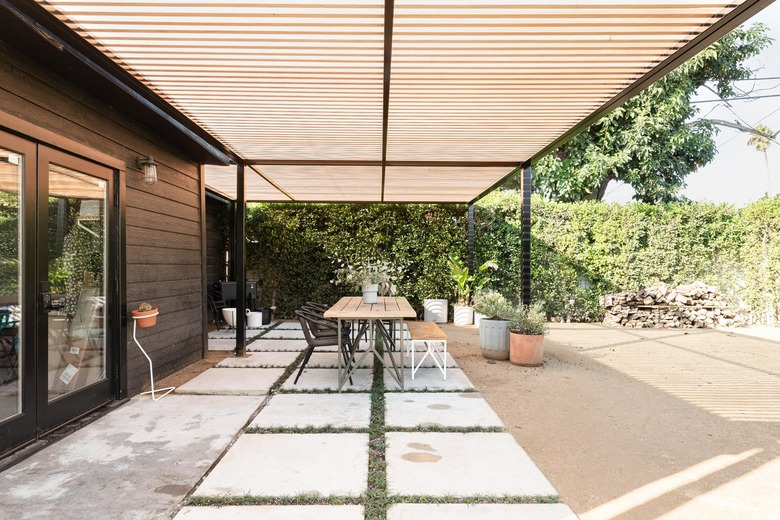Can You Pour Concrete Over Existing Concrete?
We may receive a commission on purchases made from links.
Worn or cracking concrete makes your outdoor areas look drab, outdated and in need of fresh concrete. Breaking up the old concrete to pour new requires more work, but can you pour concrete over existing walkway or patio surfaces successfully? If the existing concrete is in good shape structurally, you can pour new concrete over it to freshen it up. Proper prep work is key to success when layering new concrete over old.
Tip
A new layer of concrete can be poured over an old concrete slab if it is in good condition. If the original slab is cracked and broken, consider removing and replacing it instead.
Cleaning and Preparation
Cleaning and Preparation
Before pouring concrete over existing concrete driveway or sidewalk surfaces, remove stains and loose material so the new concrete can stick properly. Oil, dirt, and other debris can affect how the new concrete bonds with the old.
Put on safety glasses and clean the concrete with a concrete cleaner, allow it to soak in, then power wash to remove dirt, oil stains or tree sap. If an oily stain covers a large area, consider covering it with a sealer to prevent problems with bonding when you pour the new concrete. Also scrape loose or spalling concrete. Sweep or spray away the debris using a broom or power washer.
Staking and Forms
Staking and Forms
Pouring over old concrete requires the same basic forms used with fresh pours. Build wooden forms around the perimeter of the existing slab, which should rise to the same height as the new coating, generally 2 inches or more above the surface of the concrete.
Coat the inside of the forms with vegetable oil to make them easier to remove after the concrete sets. Place stakes around the edges of the concrete to mark the location of control joints before proceeding with the project.
Creating a Bond
Creating a Bond
The key to successfully pouring concrete over an existing concrete surface is to ensure the two layers bond properly. Even though concrete is strong and forms a hard structure, there's nothing in it that helps it stick to old concrete. A commercial bonding agent helps with that. It can be painted on or applied with a rag.
You can also improve the bonding between the layers by using a simple scratch coat made from very wet, soupy concrete mix. Mix up the concrete and apply it to the surface using a rag or a pair of gloves, making sure to fill every crevice. You don't need to wait for this scratch coat to dry before adding the new concrete top coat.
Pouring Concrete Over Existing Sidewalk
Pouring Concrete Over Existing Sidewalk
When pouring new mix over old concrete, make the mixture stiffer than usual by adding less water. Spread the new concrete over the surface, filling the entire area within the form you created. Smooth the surface using a two-by-four or float, then add texture as desired using stamps or a broom. Create control joints in the new concrete using the stakes to help you find the right location.
If you're using a curing compound, apply it after the concrete has been smoothed and any patterns you want applied. Cover the surface with plastic if rain is in the forecast, and allow it to dry. Depending on the concrete, use of curing compounds and weather conditions, it may require up to a week to fully cure.
Repair or Replace?
Repair or Replace?
In some cases, it's better to replace damaged concrete than to pour fresh concrete over top. If the concrete isn't structurally sound, pouring new concrete over it only offers a temporary fix. Eventually, those same problems will return, and you may need to replace the concrete anyway.
If the concrete has multiple deep cracks extending all the way through its depth, pouring concrete over existing sidewalk, driveway or patio surfaces generally is a waste of time. By the same token, if you attempt to clean the surface and the concrete just keeps breaking apart into bits of sand and gravel, replacement is your best option. Another situation where replacement is better is when sections of the concrete heave or drop, showing that the slabs have moved. They may continue to move, which means your newly poured concrete will also move.
